Idaho National Laboratory: Breaking new ground with the Advanced Reactor Demonstration Program
A renewed U.S. interest in advanced nuclear technology is making headlines around the world. Growing energy needs and an increased desire to limit carbon emissions are driving a flurry of activity among education institutions, national laboratories, and private companies. New nuclear technologies are rapidly maturing toward commercialization with the aim of deploying a new generation of advanced reactors. These advanced nuclear energy systems have the potential to provide cost-effective, carbon-free energy; create new jobs; and expand nuclear energy’s outputs beyond electricity generation alone.
“DOE and U.S. industry are extremely well-equipped to develop and demonstrate nuclear reactors with the requisite sense of urgency, which is important not only to our economy, but to our environment, because nuclear energy is clean energy,” Rita Baranwal, assistant secretary for Nuclear Energy, recently noted in a Department of Energy news release.
The DOE anticipates significant global demand for advanced reactors, and with support from Congress, intends to invest $3.2 billion over the next seven years in the new Advanced Reactor Demonstration Program (ARDP). The initial funding opportunity was announced in May 2020. The call specified the need for reactor technologies that improve on the safety, security, economics and/or environmental impact of currently operating reactor designs. The goal of the program is to maintain the nation’s leadership in the global nuclear energy industry through the successful research, design, and deployment of advanced reactors in the United States and international marketplaces.
The ARDP will provide funds for three phases of public-private technology development partnerships over the next decade and a half:
- Advanced Reactor Demonstrations: The initial $160 million funding allocation, announced in October 2020, will support two companies that can license, construct, and operate an advanced reactor design in the next five to seven years.
- Risk Reduction for Future Demonstration: The second phase of funding availability will support an additional two to five reactor designs that could be commercialized approximately five years after the Advanced Reactor Demonstrations. Awards are expected to be announced by the end of 2020.
- Advanced Reactor Concepts-20 (ARC-20): The third pathway to meet the advanced reactor demonstration goals will support up to two less mature reactor designs that will take a further five years to develop beyond the Risk Reduction phase.
INL’s role in the ARDP
As the nation’s leading nuclear energy laboratory, where 52 American reactors were designed, developed, and operated over the past 70 years, Idaho National Laboratory is in a unique position to contribute to the revitalization of nuclear energy in the United States.
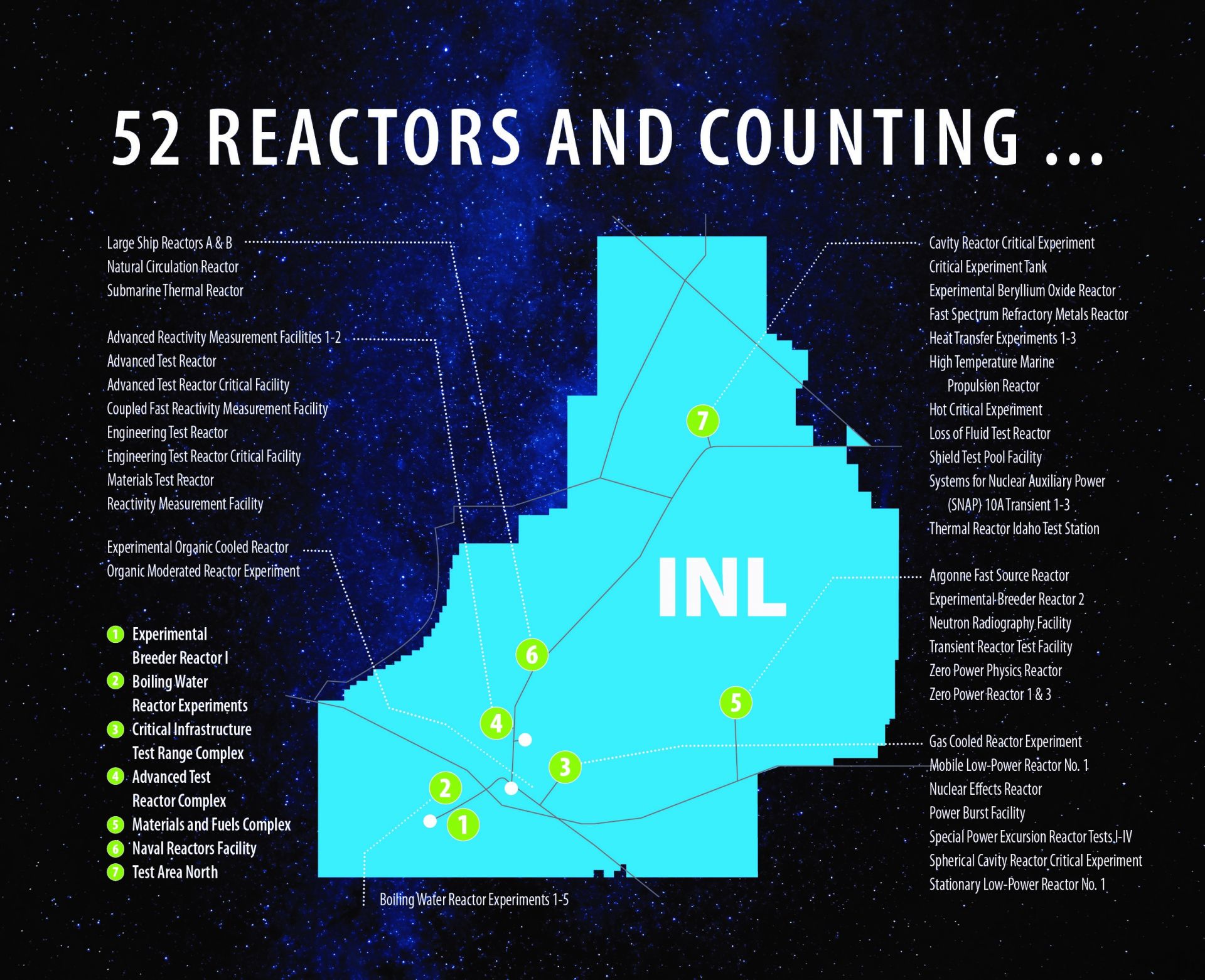
With 52 historic reactors designed and operated at INL, the nation's leading nuclear energy laboratory has the talent and technical expertise to establish a new generation of nuclear energy.
INL has expertise in critical areas that can streamline the design, development, and deployment process for commercial partners, including the following:
- Reactor design
- Irradiation and post-irradiation examination
- Fuel and materials qualification
- Multiphysics modeling
- Advanced manufacturing
- Engineering
- Safety and regulation
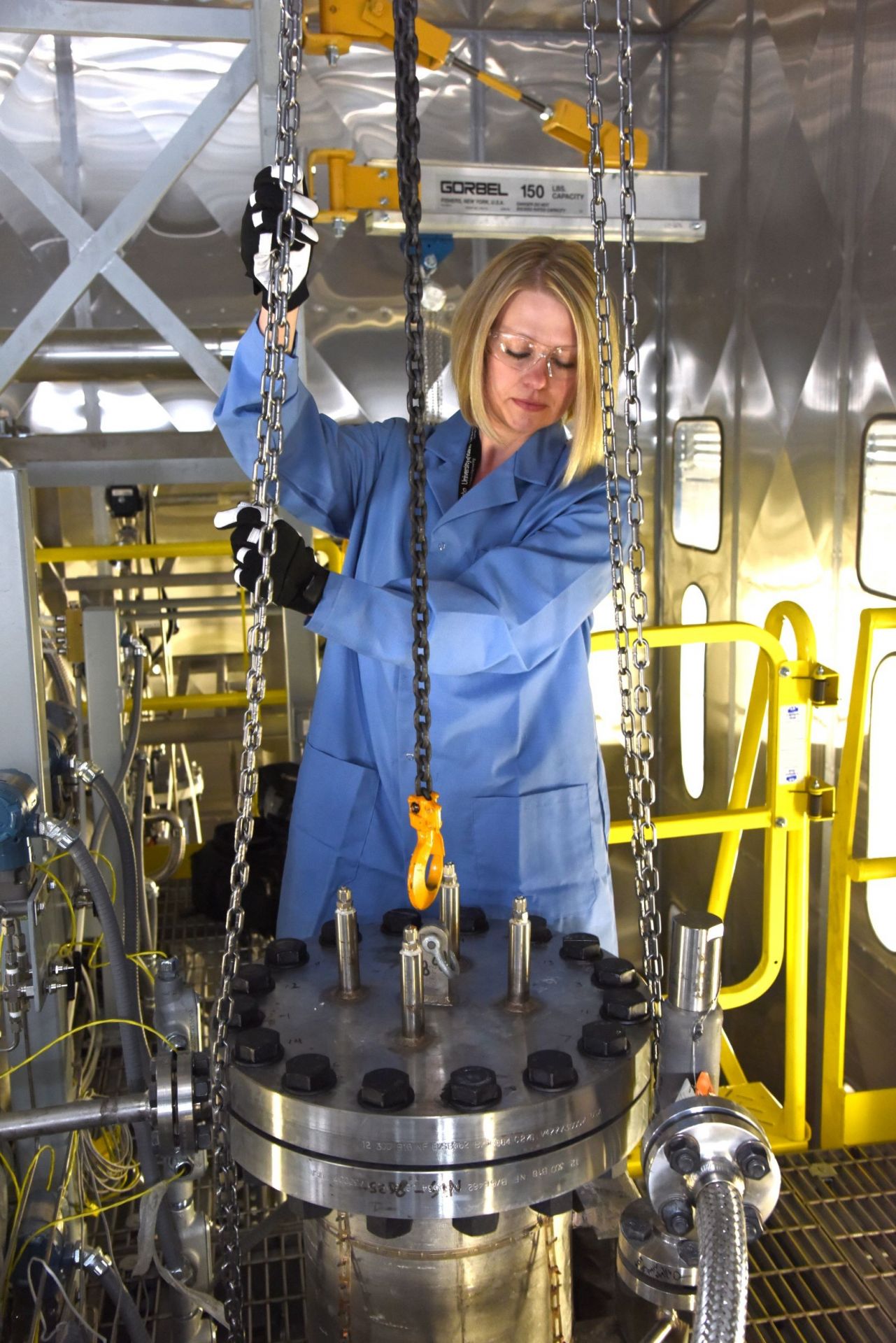
INL's facilities are available to assist collaborators during every step of the reactor development process.
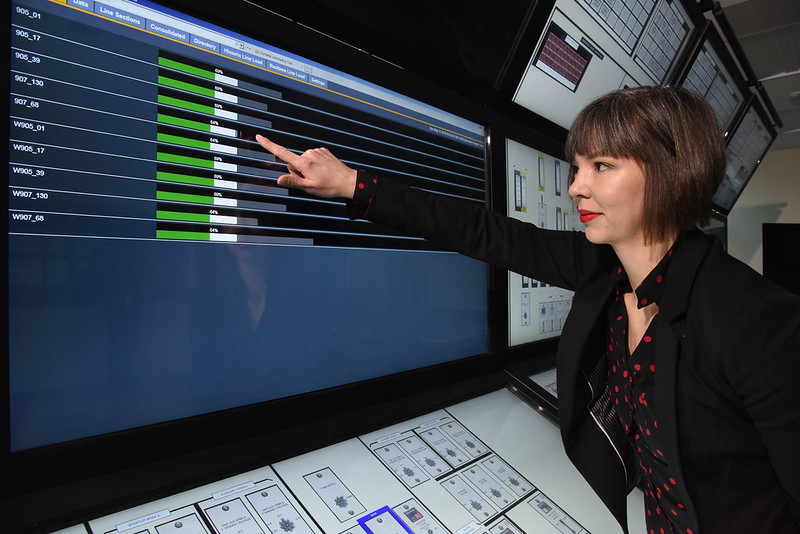
INL's facilities are available to assist collaborators during every step of the reactor development process.
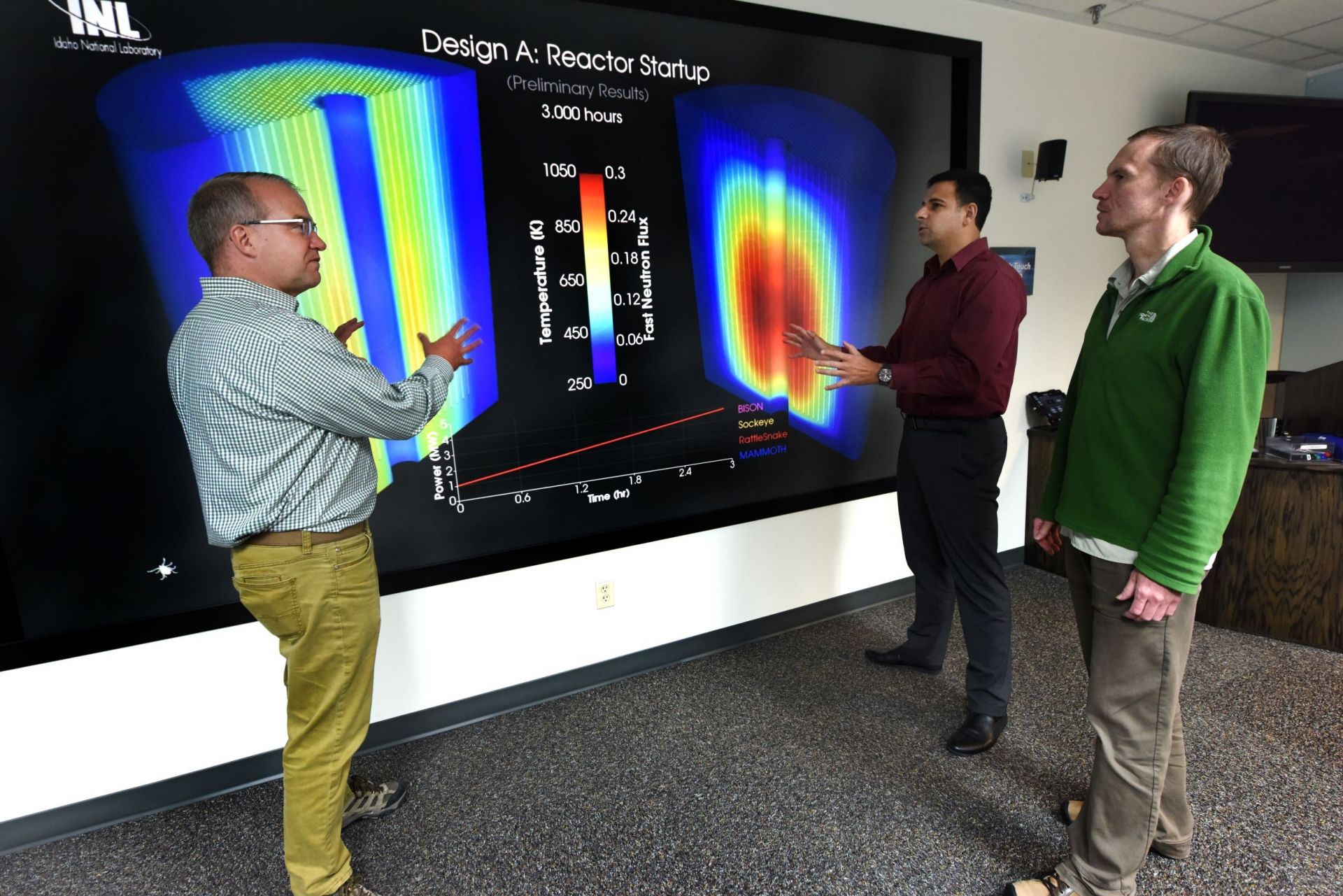
INL's facilities are available to assist collaborators during every step of the reactor development process.
INL's facilities are available to assist collaborators during every step of the reactor development process.
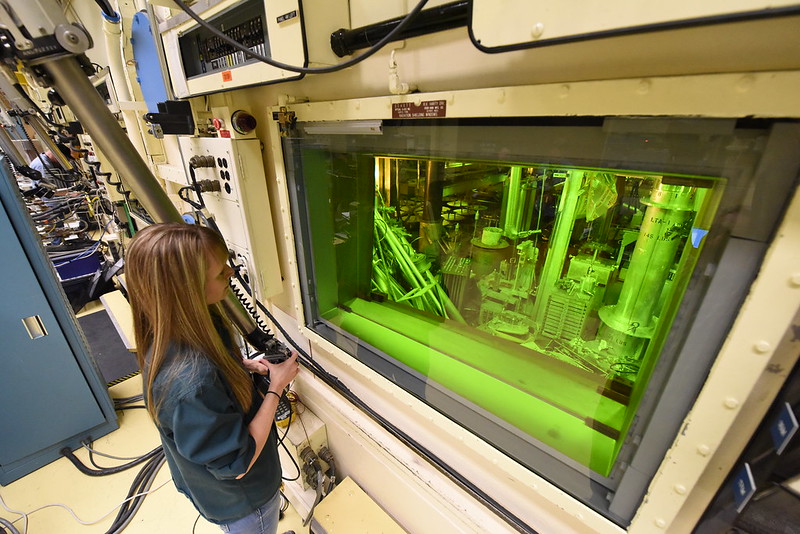
INL's facilities are available to assist collaborators during every step of the reactor development process.
In addition to INL’s experience and talented staff, the lab is home to a unique array of capabilities and facilities that exist nowhere else:
- The Advanced Test Reactor (ATR) enables researchers to irradiate materials at an accelerated rate to minimize testing and qualification time for fuels and reactor materials.
- The Transient Reactor Test Facility (TREAT) provides valuable testing capabilities in off-normal circumstances to ensure safety.
- The Hot Fuel Examination Facility (HFEF) is where post-irradiation tests are conducted on experiments to determine the effects on materials.
- The Nuclear Computational Resource Center (NCRC) provides educational and commercial partners with access to INL’s supercomputing resources to support advanced nuclear modeling and data analysis work.
The private-public collaboration process
In support of the ARDP initiative, INL utilized its extensive industry ties by reaching out to more than two dozen companies engaged in the latest nuclear research. Corey McDaniel, INL’s chief commercial officer and point of contact for ARDP proposal coordination, discusses the process of supporting many ARDP applicants and INL’s history of success in supporting advanced nuclear projects.
“INL has a rich legacy of successfully realizing the nation’s most ambitious nuclear research initiatives," McDaniel said. "INL is where the first reactor to produce usable electricity was demonstrated and developed. We are now supporting a wide range of new nuclear reactor developments such as the ARDP demonstrations as well as support to the U.S. Department of Defense Strategic Capabilities Office’s Project Pele, which is developing mobile microreactors.”
He added, “The combination of talent and technological resources at INL is found nowhere else in the country–or even the world. INL is looking forward to supporting the ARDP as it gains momentum.”
One of the most important considerations for companies developing advanced reactors is partnering with organizations they can trust. Throughout the ARDP proposal development process, the National Reactor Innovation Center (NRIC) worked closely with INL to maintain the confidentiality of each applicant’s information by establishing mechanisms such as Conflict of Interest disclosures and assigning one laboratory principal investigator for each partner. With a high degree of confidence in the process led by McDaniel and NRIC Deputy Director Nick Smith, INL now has a pipeline of reactor partners in various stages of development.
“The Advanced Reactor Demonstration Program is not only notable for the reactors that will be developed through its awards, but it is a starting point for a new wave of demonstration activities,” Smith said. “NRIC is looking forward to helping a new generation of innovators bring their designs to life.”
NRIC – The path to advanced reactors
INL is also home to the National Reactor Innovation Center (NRIC). NRIC is the DOE’s program created to give collaborators access to the services and capabilities offered across the national laboratory system. Led by Ashley Finan, NRIC is the pathway to bring the next generation of reactors to life. NRIC is uniquely positioned to help meet key demonstration milestones.
As a multilaboratory effort, NRIC is poised to provide reactor developers with capabilities at any participating laboratories, including (but not limited to) Argonne National Laboratory, INL, Los Alamos National Laboratory, Nevada National Security Site, Oak Ridge National Laboratory, Pacific Northwest National Laboratory, and Savannah Ridge National Laboratory.
“Today’s commercial innovators have the spirit and drive to make these critical advancements in reactor technology, but they don’t typically have the resources to make it happen all on their own,” Finan said. “NRIC is the bridge between commercial organizations and the facilities and capabilities offered by the national laboratory system.”
Each of the reactor technologies under investigation presents unique advantages and uses. Rather than focus on a single partner or design, INL is taking a long-term approach by supporting multiple commercial partners throughout the ARDP. In addition to the $160 million in awards recently announced, the current congressional appropriation also includes $30 million toward between two and five Risk Reduction for Future Demonstration projects, as well as $20 million toward ARC-20 projects. ARDP applicants who were not selected for a demonstration award under the first pathway remain eligible for selection under the Risk Reduction pathway. Award announcements are expected for these projects by the end of the year.
Siting advanced reactors
One vital decision that has yet to be made relates to the siting of the Advanced Reactor Demonstrations. With the entire national laboratory system available, and additional siting possibilities with public utilities, there are several locations in the United States with the technical expertise and resources to give partners the greatest opportunity for success. With INL’s dedicated group of principal investigators, siting experts, legal and financial teams, project managers, and subject-matter experts, the leadership at the laboratory is closely involved in attracting demonstration reactors to Idaho.
Regardless of the sites selected, INL is committed to supporting all of its partners, not just those that receive awards. An important step in preparing for these partnerships was expanding INL’s site-use permit (SUP) process for companies that select INL for siting their demonstration or risk reductions reactors. Nine new reactors companies entered the DOE SUP portal for consideration to have reactors sited in Idaho.
This process builds on the SUPs recently granted to reactor companies NuScale and Oklo for building at INL unrelated to the ARDP:
Oklo recently received an SUP for its Aurora microreactor plant that will generate 1.5 MWe of power using high-assay, low-enriched uranium (HALEU) fuel. Oklo has submitted a license application to the Nuclear Regulatory Commission for its reactor demonstration.
NuScale is developing a small modular reactor system in support of the Carbon Free Power Project created by Utah Associated Municipal Power Systems. The proposed 12-reactor plant would provide a total of 720 MWe of electricity to public power utilities in six western states.
In anticipation of this process, INL has worked with DOE to dramatically reduce the turnaround time for SUPs. INL’s siting lead George Griffith noted that “NuScale’s SUP took more than two years, the SUP for Oklo took more than eight months, and we expect that quality SUP proposals can now be turned around in less than two months.”
Proposal awards
The funding opportunity announcement closed in August 2020. On October 13, the DOE announced the initial award recipients, selecting two teams to receive a total of $160 million in fiscal year 2020 funding for the ARDP: TerraPower LLC and X-energy. Each of the companies will receive $80 million, with the companies expected to match the award with development funds of their own.
Congress appropriated $160 million for the fiscal year 2020 budget as initial funding for these demonstration projects. According to the DOE news release announcing the initial award selections, funding beyond the near-term is contingent on additional future appropriations, evaluations of satisfactory progress, and DOE approval of continuation applications.
TerraPower Natrium Reactor
Based in Bellevue, Washington, TerraPower is planning to demonstrate the Natrium reactor, which is a sodium-cooled fast-neutron reactor developed in partnership with GE-Hitachi. Fast reactors offer several advantages over slow-neutron reactors, including fuel efficiency and a higher operating temperature that can provide thermal energy storage in addition to electricity generation for flexibility in meeting demand. TerraPower’s Natrium reactor will provide 345 MWe of flexible electricity generation that can be utilized in conjunction with a molten salt integrated energy storage system. The reactor can convert heat directly into electricity for immediate use, or it can store the thermal energy in the molten salt system, which on demand can boost the operation to 500 MWe for more than 5½ hours. The flexibility of the system is ideal for use in concert with variable renewable energy sources such as wind and solar power. This approach supports the case for cost-effective operation of advanced reactors, while also improving the public perception of nuclear energy as part of a more eco-friendly energy grid.
The TerraPower project scope also includes developing a new facility for fabricating metallic fuels to support the demonstration. INL will provide support for the project through fuel irradiation experiments in ATR and post-irradiation examination of fuels in the Hot Fuel Examination Facility. Additional testing activities will take place using the sodium loop at TREAT.
“TerraPower is excited to be working with Idaho National Lab,” explained Chris Levesque, TerraPower president and CEO. “We’ve been working with INL for more than 5 years on sodium fast reactor fuel development and look forward to continuing that work on the Natrium ARDP team, along with GE Hitachi and our other partners.”
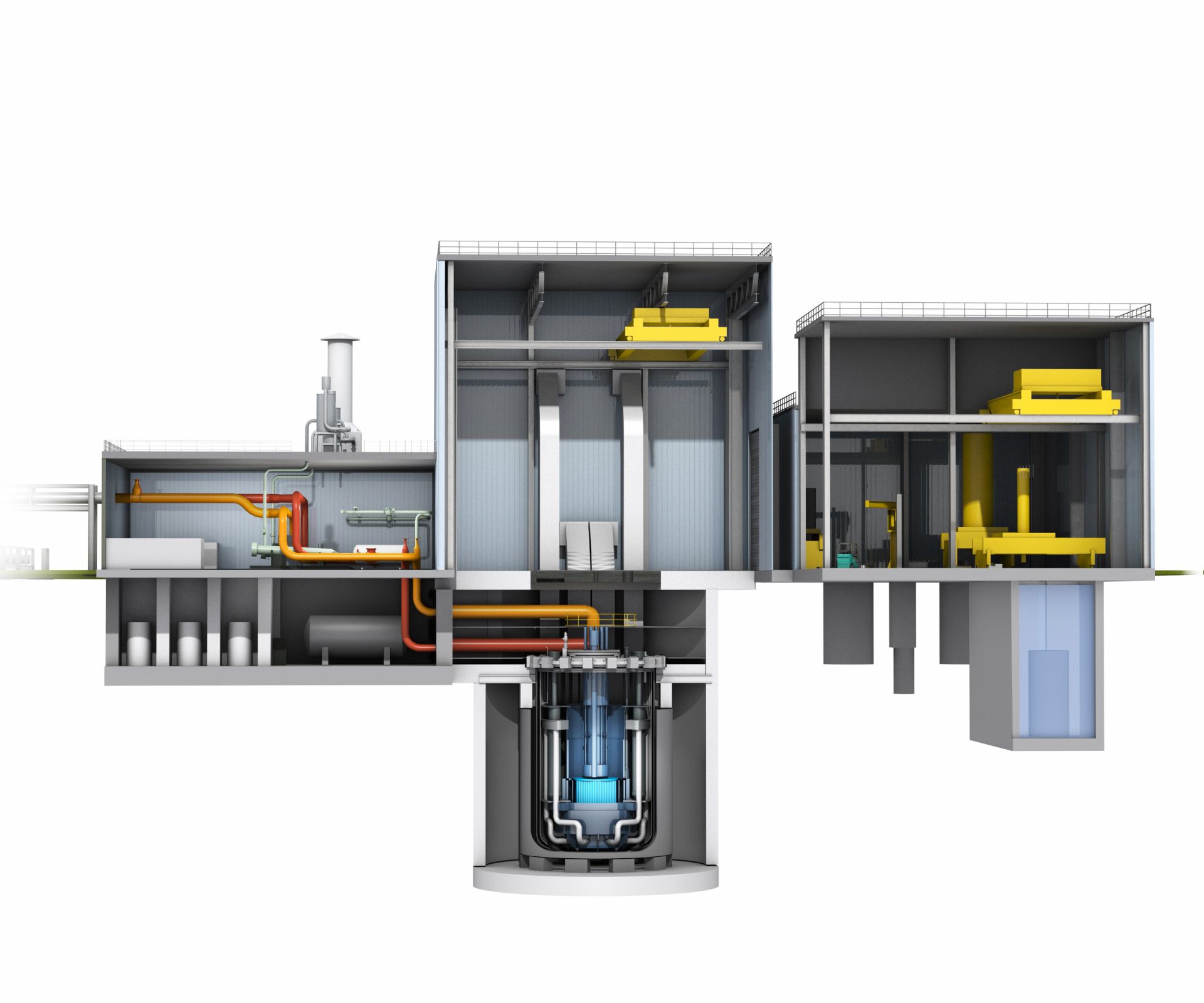
The Natrium reactor design; image courtesy of TerraPower.
X-energy Xe-100
Also receiving an award was X-energy, of Rockville, Maryland, which is planning to demonstrate a four-unit commercial plant based on a high-temperature, gas-cooled design called Xe-100. The Xe-100 is an 80-MWe microreactor that is designed to be installed in a modular configuration of four reactors producing a total of 320 MWe. The flexible design allows reactor modules to be added as they are needed. The fuel will consist of 220,000 graphite pebbles containing tristructural isotropic (TRISO) particle fuel, designed to maintain 95-percent plant availability even during the refueling process. The reactor’s high operating temperature provides an enhanced fuel burnup cycle that represents a significant efficiency improvement over commercial light-water reactors.
The X-energy reactor is also expected to provide flexible electrical output as well as process heat that can aid a variety of industrial applications including hydrogen generation and desalination. On the fuel side, X-energy is also planning to develop a commercial-scale facility for fabricating TRISO fuel, one of the most promising accident-tolerant fuels available.
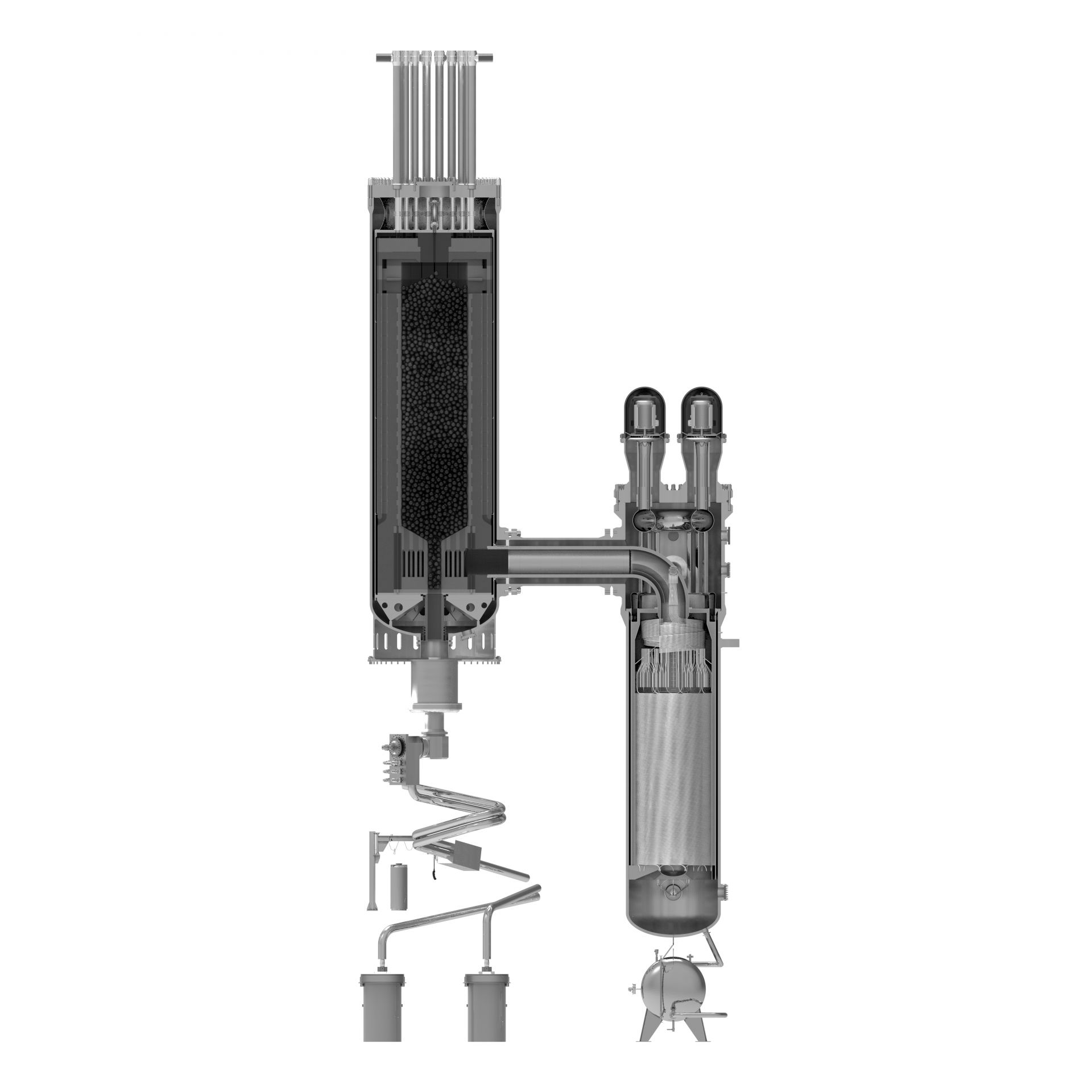
The Xe-100 reactor design; image courtesy of X-energy.
INL will support the X-energy demonstration with development of technologies for burnup measurements of individual fuel pebbles, which will help establish fuel safety and efficiency. The lab will also support the modeling and simulation work for the project by applying Nuclear Quality Assurance (NQA-1) standards and regulations to an independent design assessment using neutronic and thermal analysis. The resulting data will inform the reactor licensing application.
“We are honored by the DOE for selecting X-energy and our partners to deliver our commercial-scale Xe-100 advanced reactor by 2027,” said Clay Sell, X-energy CEO. “We commend the Department of Energy and Congress for recognizing the contribution of nuclear to the clean energy equation and in bringing this safe, secure, clean and affordable technology to the U.S. and many countries around the world.”
The two selected projects demonstrate the commitment of the Department of Energy to the development and eventual deployment of multi-use, economically competitive advanced nuclear reactors.
Timeline to advanced reactors
The DOE has set an ambitious but achievable timeline for the demonstration and eventual commercial deployment of advanced reactors. Research is being conducted now on a variety of advanced reactor concepts with different use cases that can help power remote communities, scale to meet the growing needs of cities, and provide benefits in addition to electricity generation.
Microreactors: These reactors are intended to provide 1 to 20 megawatts of thermal energy while being small enough to fit on the back of a semitruck. They can be fabricated in a factory and are intended to operate with minimal human supervision. These reactors are in development and are expected to be demonstrated as early as the middle of this decade.
Small modular reactors: SMRs can provide from tens to hundreds of megawatts of electricity based on the needs of each application. They can be largely fabricated in factories and assembled on-site, saving considerable capital expense. Additional modules can be assembled as need grows. The DOE is currently supporting a variety of commercial partners developing SMRs and associated technology, with awards for technical and regulatory research work. Commercially operating SMRs are expected to be deployed by the end of the decade.
Versatile Test Reactor (VTR): One significant capability currently unavailable in the United States is fast-neutron materials testing, which is needed for rapid and accurate research and development of new materials and nuclear fuel. To address this shortcoming, in 2019 the DOE authorized the development of the Versatile Test Reactor, with INL leading the project. In September this year, the DOE approved Critical Decision I for the VTR, paving the way for the final design and construction process. The VTR could be operational as early as 2026.

The DOE is poised for the deployment of a series of new reactor technologies by the end of the decade.
Next steps in advanced reactor development
This is an unprecedented time for nuclear energy, with a large number of new technologies in development and the commercialization of new reactor designs on the horizon. The next decade will see a revitalization of the U.S. power industry, resulting in cleaner electricity that meets the needs of a growing population as well as new applications for nuclear reactors that can reduce industrial and transportation sector carbon emissions.
“Not since the 1970s has there been such a flurry of both private innovation and support at the highest levels of government for nuclear energy,” said Craig Piercy, American Nuclear Society Executive Director and CEO. “It’s an exciting time for nuclear engineers and scientists to be at the forefront of America’s clean energy transition.”
McDaniel added, “We’re seeing a tremendous uptick in activity among technology developers. With the development of a new series of collaborative efforts between public and private organizations, INL is poised to expedite the success of the ARDP and maintain the United States’ position as the world leader in nuclear energy.”
Joel Hiller is a nuclear communications specialist at Idaho National Laboratory


